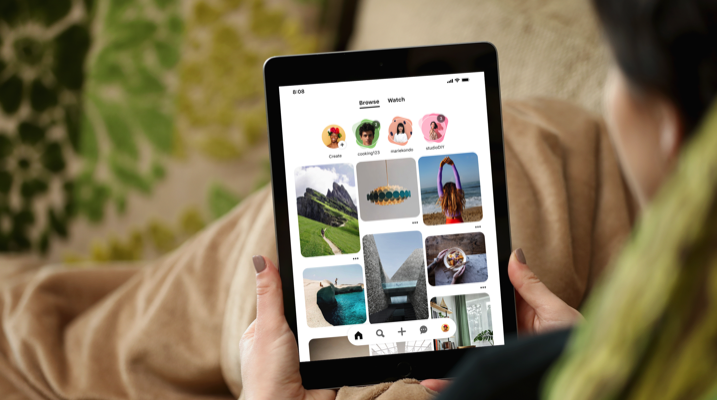With over 460 million people using social media platform Pinterest each month, there are countless opportunities for savvy retailers to capitalise on this engagement, and convert traffic into sales. Pinterest uses a combination of machine learning and human curation to offer tailored recommendations and search results based on the interests of users. With 97 per cent of platform searches not connected to a particular brand or business, retailers of all sizes have the potential to be discovered �
d – provided they can leverage the insights and trends available to them.
The platform’s vision is to make everything on Pinterest shoppable. The aim is to make all items and products that can be Pinned – or bookmarked – by users available for purchase, with the ability to shop integrated across the entire user experience.
Additionally, Pinterest incorporates digital tools and features such as augmented reality try-on tools and Pinterest Lens visual searches to enhance user engagement, and drive sales. According to in-house research, over half of users expressed that they use Pinterest as a place to shop.
Lottie Laws, head of retail at Pinterest, told Inside Retail that the platform has developed strong partnerships with Australia’s biggest retailers, including Wesfarmers, the parent company of Kmart, Target, Catch, Bunnings and Officeworks, and Woolworths. She noted that the platform’s trends data and predictive insights were a particular point of attraction.
“For instance, if someone is putting items of furniture on a Pinterest renovation board [a curated list of saved Pin]), we know that they’re likely to renovate soon, and would consider purchasing those, or similar items,” she said.
“People might come to Pinterest with an open mind and be inspired, or they might be ready to shop. Our job is to make the ideas that they are creating shoppable.”
“Interject and hijack”
Laws pointed to discount department store Big W as a retailer that has successfully used Pinterest to engage people across the entire user experience – from when they are making discoveries, to the point where they are ready to buy.
She noted two particular collections – Celestial Scandi and Island Beauty – which subsequently became trending topics. Through these campaigns, Big W drove 34 per cent higher engagement, and 77 per cent lower cost per acquisition, compared to retail benchmarks.
Laws also referred to Mecca’s interactive Trending Machine campaign, which brought to life beauty and make-up looks based on seasonal trends.
The campaign enabled shoppers to virtually try on products and provided users with interactive lookbooks featuring video tutorials and other product information.
“We’re essentially bringing catalogue shopping to more of our verticals, with all of our advertisers able to upload product catalogues,” Laws said.
Since almost all searches on Pinterest are unbranded, she noted that there’s an opportunity for brands to “interject and hijack” searches that are relevant to their offerings.
“The brands that do the best work on Pinterest are aligning themselves with what people are looking for, and the type of content they’re interested in,” she said.
“They’re enriching that experience by offering up relevant products and helping people qualify their ideas before they go on to buy.”
The forefront of digital technology
According to Laws, Pinterest has successfully identified trends that aren’t just flash-in-the-pan fads, but have gone on to be long-lasting. It is particularly popular among Gen Z, millennials, and creative professionals, with the former being its fastest-growing demographic.
She also noted that sustainability was a notable priority for users well before it became a mainstream expectation. As such, there are opportunities for retailers to tap into trends that have later become more widely popular.
Pinterest has also been an early adopter of new technologies – including visual search – and recently launched its Spotlight feature, which provides advertisers with enhanced visibility on the search page and home feed.
“We’re also aware of all the changes that are happening with cookie applications and privacy, and are working hard with advertisers to make sure we’re meeting their expectations around attribution and measurement solutions,” she said.
Away from the toxicity
Laws added that the platform’s search function enables people to conduct searches that more accurately reflect their skin tone, hair type and other features that may impact the way they look and feel.
“We have really strong policies that make Pinterest a safe and positive environment, and that’s why Gen Z is our fastest growing audience. They are coming because it’s away from the toxicity of other social media platforms,” she said.
“Consumers are already coming to Pinterest with high intent – to plan or do something – and retailers can show up in a positive place, and make the most of this.”

